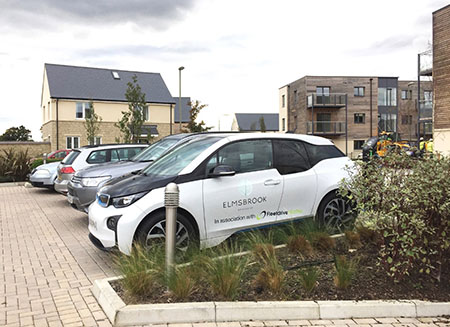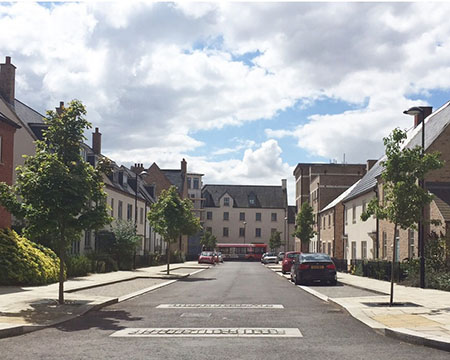Inform your design:
Prepare a plan demonstrating a variety of parking solutions including the needs of private plots, visitor and on-street parking and the ways to achieve them.
p57. Providing sufficient car parking to meet the needs of residents whilst creating attractive and successful development schemes can be a significant challenge. Too much parking can visually dominate the street and weaken its enclosure (count garages and car ports towards parking spaces). Too little results in frustration for residents and visitors alike and can lead to indiscriminate parking. The need for parking is a reality however, and imaginative solutions should be adopted to respond to this challenge. Developments should be future proofed to ensure expensive retrofitting isn’t required in the future (electric charging points).
p58. Residents tend to favour parking solutions that maintain a line of sight between their dwelling and their vehicle. As such parking courts to the rear of properties tend to be less successful solutions.
p59. Parking on-street remains one of the most successful ways to accommodate parking as part of a balanced solution. Parking on the street is an efficient use of space and people understand how it works. Unlike rear parking courts, on-street parking increases activity on the street and between the street and the house.
p60. On-street parking should be designed into the street scene from the outset. It may be parallel to the kerb, angled to the kerb (echelon), perpendicular to the kerb or within a central reservation. However, it should not be allowed to dominate the environment or to negatively impact the character of a street. All solutions for parking within the street should benefit from landscaping and the materials used should be of the highest quality.
p61. Developers should consider the promotion of public transport, car clubs, rural car clubs, bicycle and scooter hire schemes as a means of reducing the need for people to have their own vehicles. Consideration will need to be given to the parking requirements of hire or pool vehicles in accessible locations, as well as their storage and potential charging needs. Car free developments should also be considered in appropriate locations.
Prepare a plan demonstrating a variety of parking solutions including the needs of private plots, visitor and on-street parking and the ways to achieve them.
Prepare a parking strategy plan.
Manual for Streets 1 (DfT, 2007)
Manual for Streets 2 (ICHT, 2010)
Oxfordshire Street Design Guide (OCC, 2021)
Oxfordshire County Council Parking Standards (2012)
Oxfordshire Transport and Access Group (OXSTRAG)
Streets for all (Historic England, 2018)
Electric Vehicle Charging in Residential and Non-Residential Buildings (2019)




Ensure the scheme:
Note: All design principles are applicable to all scales of development unless otherwise specified; *minor applications, **major applications